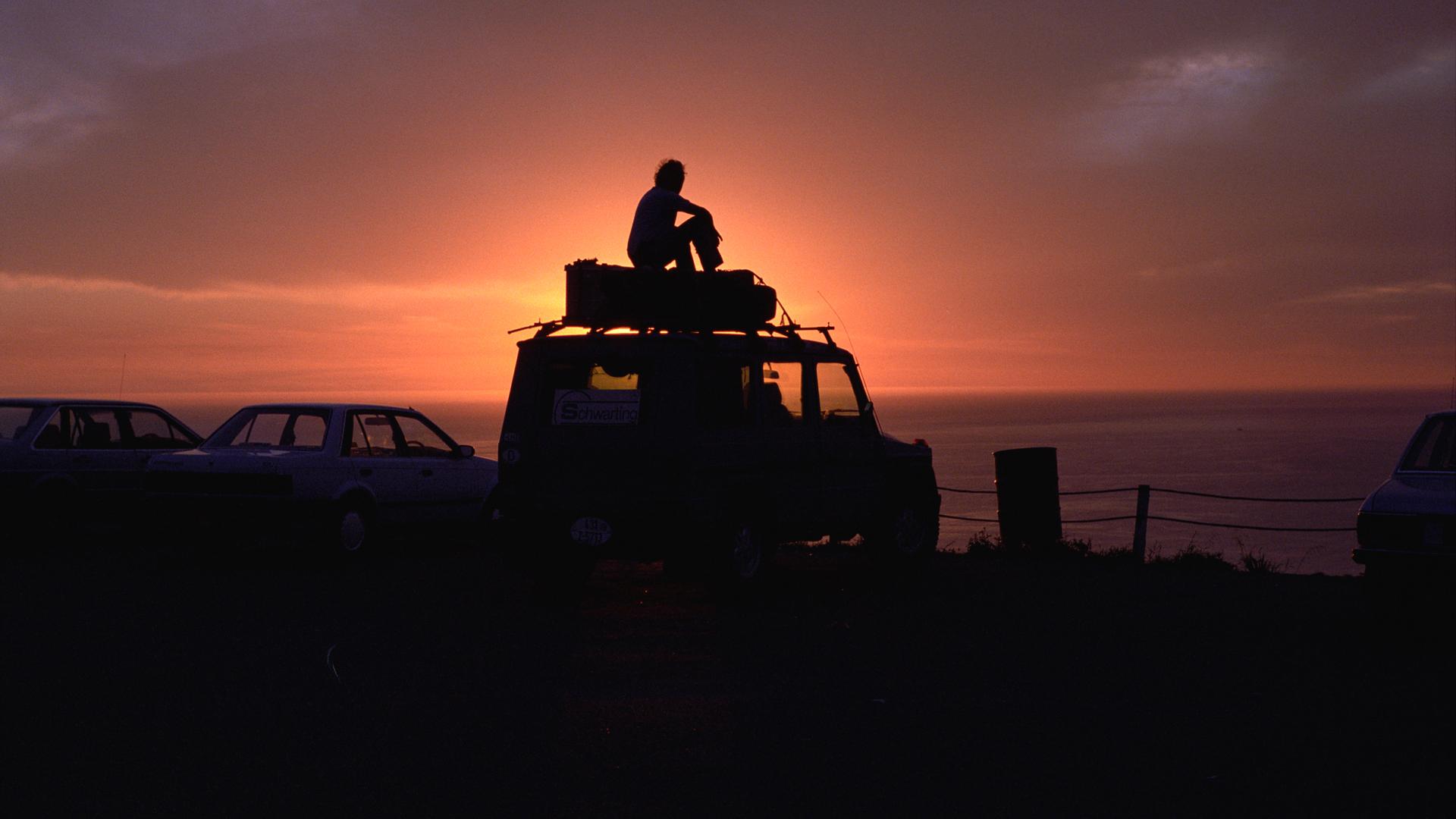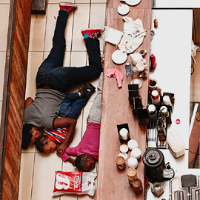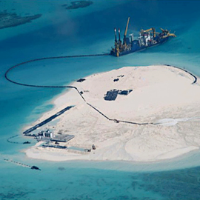
Gunther, Christine and Otto
How a man met a woman and they set off on an epic journey across six continents in one amazing unbreakable car
It’s an hour before sunset in northern Madagascar.
The bush stretches to the horizon and surges up to the edge of the road. Light floods the scene from left to right and pours through the open window.
Another vehicle is coming towards Gunther Holtorf without slowing. It’s going to be a tight fit.
He brakes and steers the Mercedes G-Wagen towards the verge. It’s soft and gravelly, and the thick vegetation conceals a steep slope. Slowly the car slips, then starts a slow-motion roll. Mid-roll, it stops for a second, then it turns again - but hits a spindly tree, just strong enough to peg it in position on its side.
Remarkably, this is the first accident Holtorf and his car, Otto, have experienced in 26 years on the road. There have been minor incidents – a kangaroo flying into a side door, an Indian lorry reversing without looking – but in 177 countries and 884,000km (549,000 miles), nothing worse than a dent.
Holtorf, 76, undoes his seat belt and lifts himself out of the open passenger window. He’s unharmed – not a scratch.
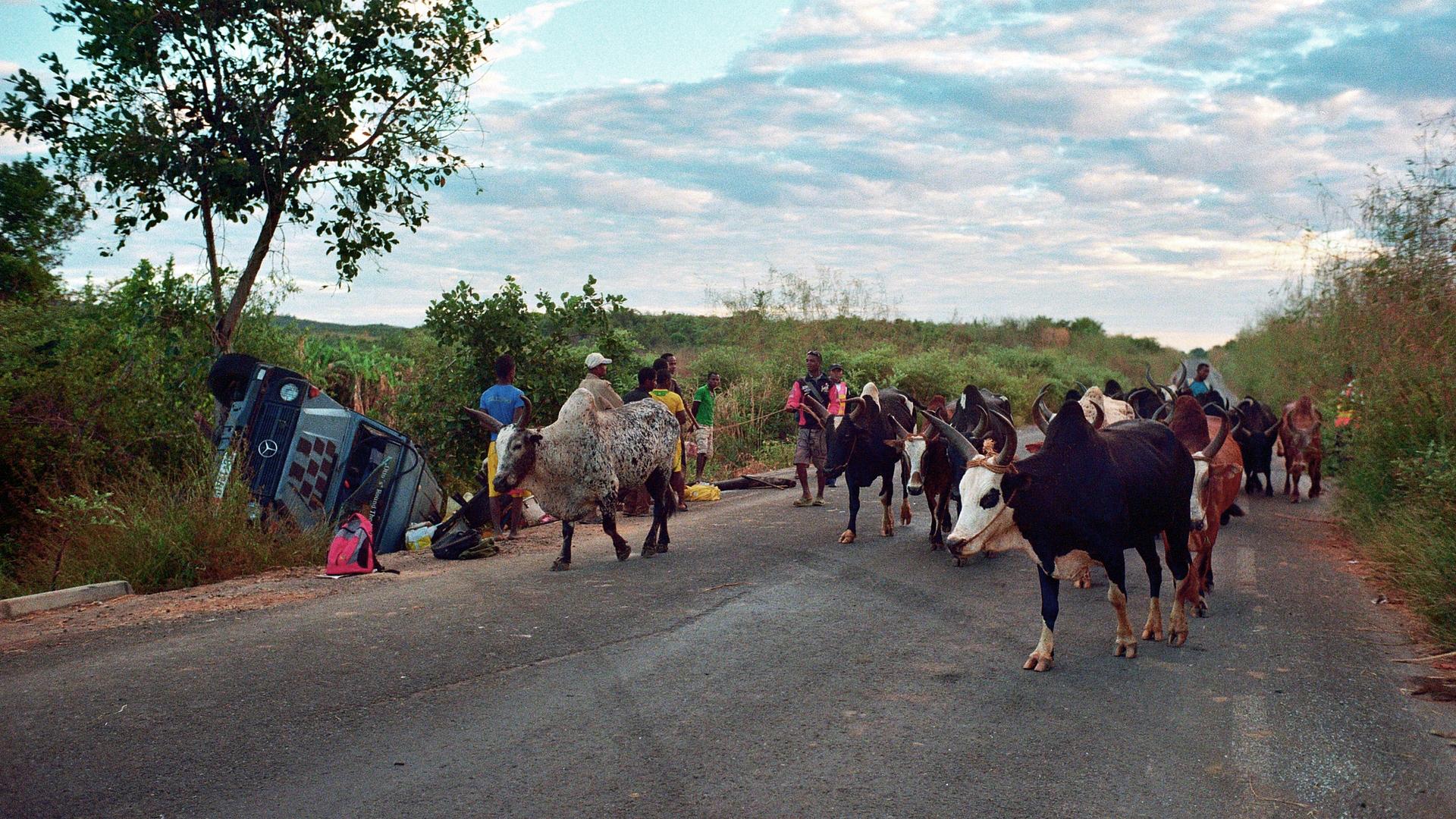
Africa
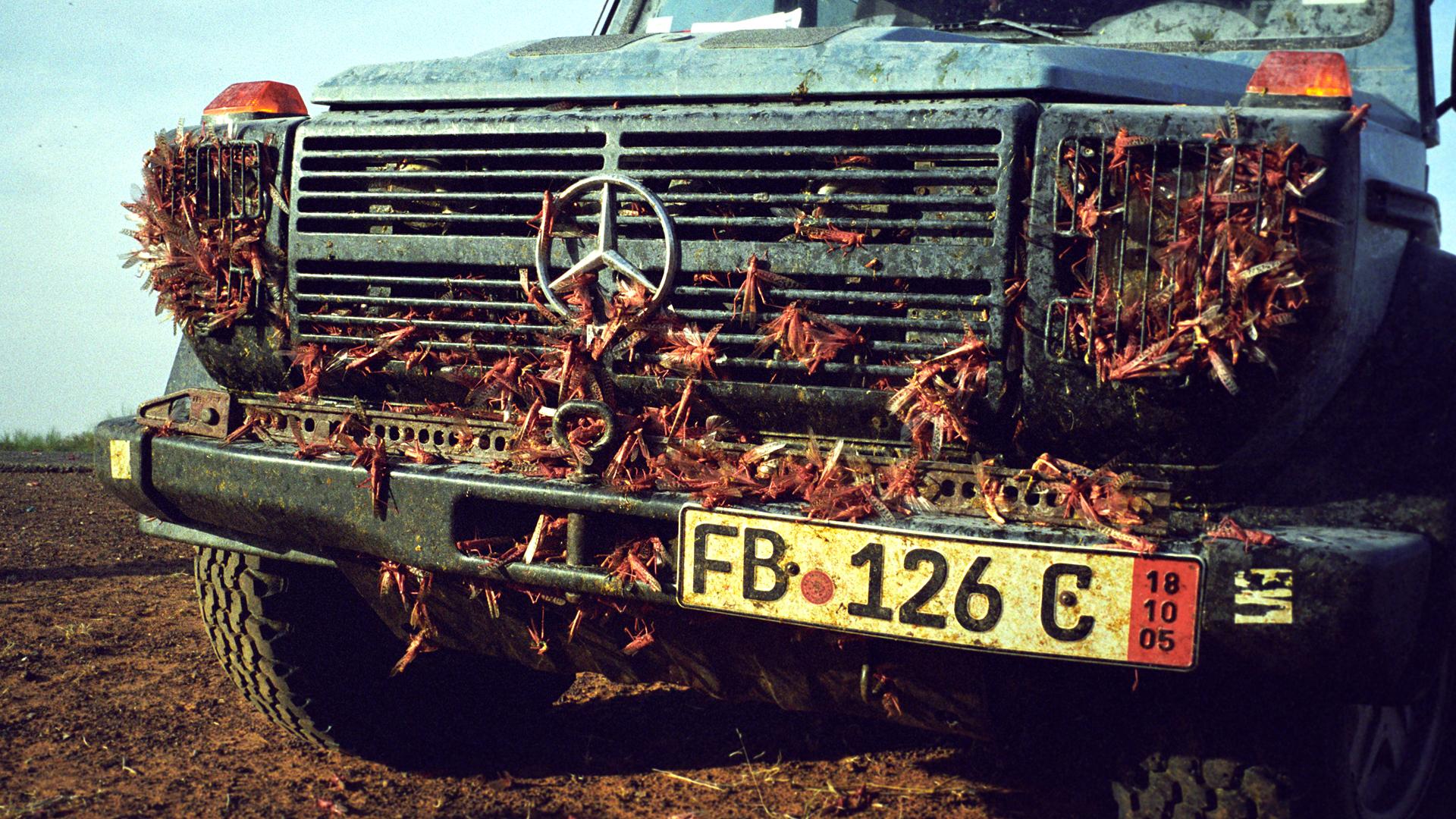
For most of this epic journey, Holtorf was accompanied by his fourth wife, Christine. They formed an extraordinary 20-year partnership, in which Otto was a third and equal member.
By the time they met in April 1990, Holtorf had already returned home to Germany from a trial run in Africa, with his third wife, Beate. It had been a valuable learning experience, with two immediate consequences.
First the couple split up. Then Holtorf got Otto refitted, creating a spacious storage area under a comfortable bed.
His next step was to put an ad in the Die Zeit personal column, to which Christine, a single mother from Dresden, replied. They hit it off, and before long he had a question for her: “I said, ‘Why don’t we do a little bit of travel?’”
Christine agreed, and in November, once her son had been settled in a boarding school, Otto set off for Africa again. Holtorf was 53, Christine 34.
The plan was to spend a couple of years touring the continent, spending as little time as possible in towns or cities, and as much as possible out in the wild.
In 30 years working for Lufthansa, more than 20 of them in offices overseas, Holtorf had spent hour after hour in the air looking down at roads - roads winding over passes and plunging into valleys, or etching a dead straight line across a sun-baked plain. After quitting his job in 1988, he decided this was where he wanted to be.
The couple headed straight for the Sahara desert, crossing Algeria and Niger from north to south, before hanging a right at Zinder and heading for Mali.
Holtorf has glowing memories of these desert areas “beyond civilisation”, then free of hostage-taking militants (though French soldiers prevented them from reaching Timbuktu). He met other Western travellers who were, he says, “addicted” to the Sahara, returning again and again, and he can understand why.
“The Sahara doesn’t mean sand, only 13% is sand, the rest is gravel, rocks, dry nature. There is no grass, no animals, no insects, no wind,” he says. “You can listen to the silence.”
In those days Holtorf also listened to music on Otto’s cassette deck, now long defunct, particularly the piano music he’d heard his father playing as a child – Beethoven, Brahms, Schubert, Schumann. One night, he broke the silence of the desert with one of these cassettes.
“We stayed overnight and we stayed alone. There was definitely nobody in the vicinity - and the vicinity means about 100 or 150km,” he recalls.
“We put on one of the Beethoven sonatas, I don’t remember exactly which one, and were listening with full loudspeaker power, under a full-moon sky, sitting alone in the Sahara Desert.”
He pauses. “It’s something, ja... out of this world.”
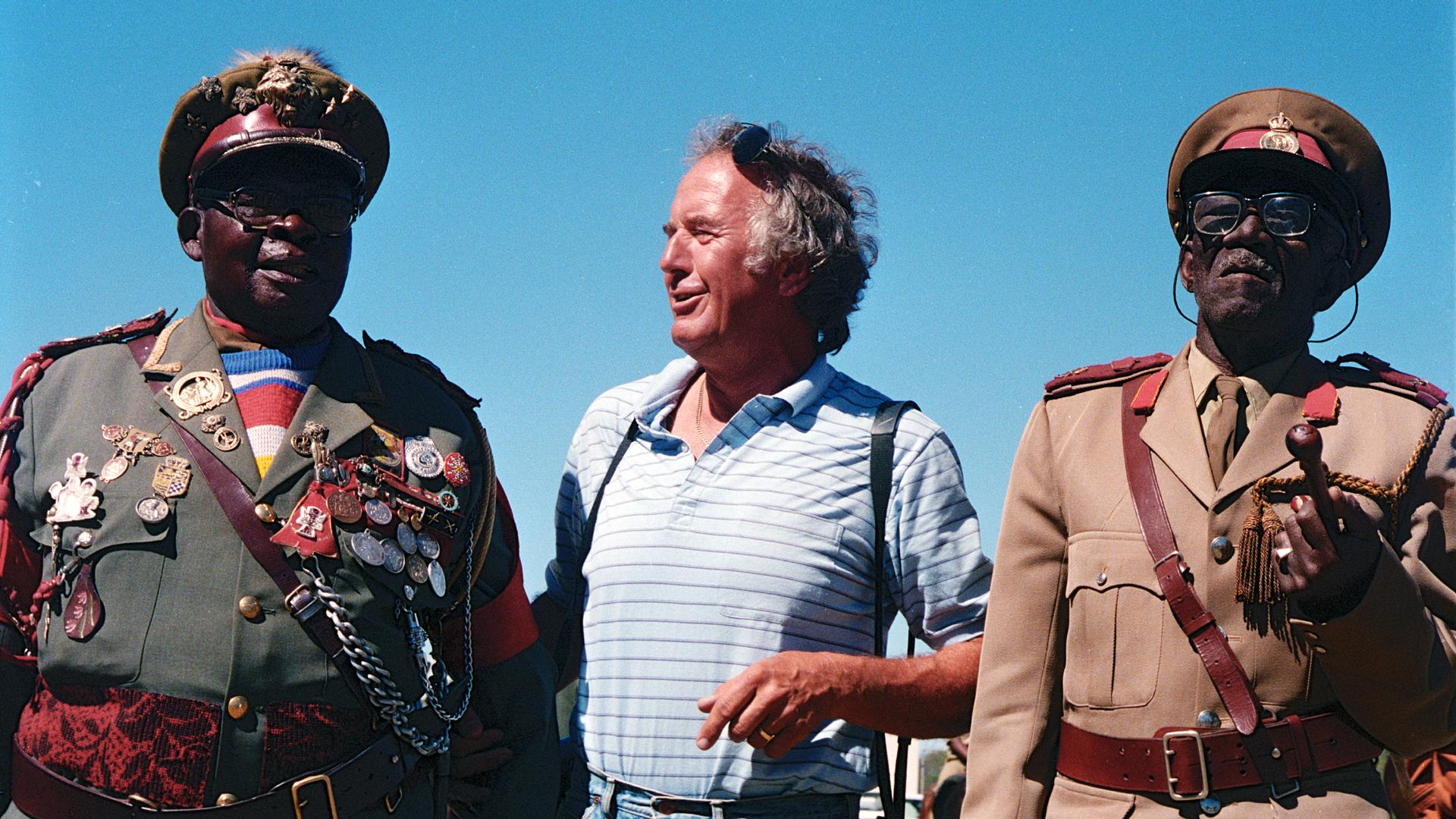



From the emptiness of the desert they travelled to areas red in tooth and claw, in West and Central Africa.
They watched a pack of lions devour a buffalo, the hyenas and jackals tackling the leftovers overnight, the birds arriving at sunrise to clean the skeleton. A few days later they followed the lions setting off to hunt again. Travelling in Otto gave the couple complete independence, and the ability to observe wildlife completely alone.
Once or twice they got too close to animals for comfort.
The couple did not travel constantly, but for a few months each year, leaving Otto in storage the rest of the time, usually in Nairobi. Zambia and Zimbabwe were particular favourites.
On one occasion, Holtorf was alone at the Mana Pools national park in Zimbabwe while Christine visited her son in Germany. Lying in swimming trunks on high ground above Zambezi river, enjoying the view of hippos and crocodiles below, he turned to find an elephant only a few metres away.
For a moment, he felt extremely vulnerable, looking up, nearly naked, at an animal that could so easily crush him. There was nowhere to run – fleeing towards the river was not an option. The elephant moved closer, sniffed at Holtorf’s empty hammock, then slowly turned and walked away.
But that was nothing compared to an episode that occurred one night on the same visit. This time Holtorf was watching hippos and a herd of buffalos as he lay in his high-sided South American hammock, occasionally drifting off to sleep. At one point he woke suddenly, without knowing why.
“I lowered one side of the canvas and looked straight into the eyes of a spotted hyena,” he says. It was about two feet away. “The hyena was shocked, I was shocked. I made a noise like ‘Woof!’ and fortunately the hyena dashed away.”
Hyenas generally eat dead animals, but the spotted hyena has been known to take a bite out of sleeping humans.
Holtorf later found that his soap box, which had been resting on Otto’s front bumper, had been demolished, only a few splinters remaining. Of the soap itself there was no trace. It was the noise of the hyena’s teeth shattering the box that woke him up, he believes, and saved him from a serious wound.
This was Holtorf’s scariest experience with animals, but far from the only incident in Africa that could have turned out very badly.
“It only happened once that we have been, ja, held at gunpoint,” he says. “That means I had a chance to look into the Kalashnikov from the front, and that was in northern Ethiopia in the border area with Somalia and Djibouti. A little bit strange, a dangerous area and very remote.”
Holtorf talked and joked with the men for two hours. What saved him, he says, was his grey hair, and the respect paid by young men in the region to their elders. Eventually they parted with a handshake. Holtorf has a rule never to pay bribes, but on this occasion it seemed like a wise move to seal the friendship with some notes.
Later the same year, 1994, the threat came not from animals or humans, but from ancient British infrastructure.
Holtorf and Christine had driven from Kenya through Ethiopia and Eritrea to Sudan, where at Atbara, north of Khartoum, they loaded Otto on to a flatbed wagon for a rail journey to Wadi Haifa, on the Egyptian border.
The railway, dating back at least to the 1940s, was made without foundations, the sleepers lying directly on the sand. “You can imagine the alignment,” says Holtorf. The train went slowly, but shook wildly.
“I was seriously scared Otto would jump off the flatbed, even though I had lashed him down, so whenever the train stopped I jumped down to check the lashing."
At one stop his feet landed on cables and he fell on his right shoulder. For a moment the joint seemed to be damaged, but he rotated his arm like a windmill and the problem went away.
A week later, though, as Holtorf tried to climb up on to Otto’s roof to photograph a pile of pink grapefruits surrounded by Sudanese men in flowing white robes, he experienced an excruciating pain.
“I was trying to pull myself up, and I pulled my right arm out of my body,” he says. It was dislocated. “There is only one word for it – ‘Scheisse!’ - I was really suffering.” He had his arm strapped across his chest at a desert hospital in Dongola, then drove one-handed back to Nairobi for treatment, with Christine sometimes helping to change gears.
On the five-week journey, two further health emergencies occurred.
A streptococcal infection implanted by some flies in his ankle grew gradually and imperceptibly worse, until one day it burst into the open, releasing a torrent of pus. Holtorf says he came close to losing his foot.
Then, the day before they were due to reach Nairobi, he came down with his fifth case of malaria.
South America
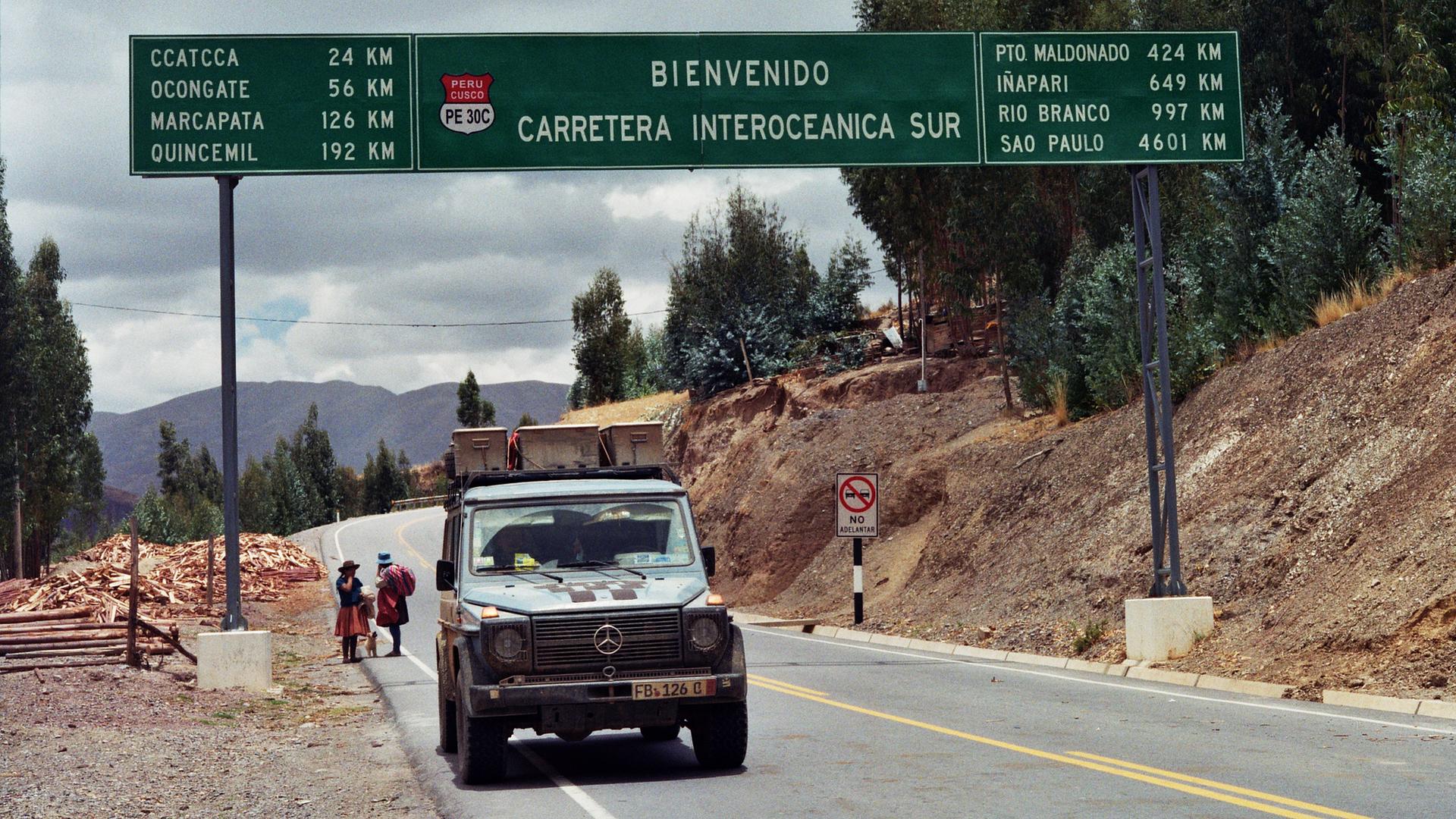
One of the secrets of travelling off the beaten track, Holtorf says, is patience.
Another is positive thinking.
All problems can be solved in time, he believes, and malaria – which he has now had eight times - is one that he reckons to overcome in two days.
“Fifty per cent of sickness is sickness you have mentally,” he says. “You get malaria and mentally you add another malaria - but I cut it by 50%. I take pills, my fever goes down, and the next day the sun is shining again, and everything is all right.”
There are some people who, faced with 99 positive things and one negative, focus on the negative thing, he suggests. “I am the other way round. If there are 99 negative and one positive, I focus on the positive.”
Holtorf and Christine never stayed in hotels. They slept in Otto, or in hammocks. Wherever they were, they shopped in local markets, and cooked their evening meal on a gas stove by Otto’s open rear door.
In almost all weather, on all continents, they sat outside.
Born in 1937 in Goettingen, Holtorf grew up in the hard years during and after World War Two. He was used to making do - as was Christine, born in 1956 in Eastern Germany. They would both scoff at younger Germans who have, by comparison, such a high standard of living but “an even higher standard of complaining”.
The tour of Africa stretched from two years to five, but it also whetted the couple’s appetite for travel, Holtorf says. At the end of 1995 Otto was put in a container and shipped to South America, a continent Holtorf knew well, having worked there for Lufthansa in the 1960s and again in the 1980s. It was natural to want to explore it again with Christine.
Otto spent most of 1996 in storage in Montevideo, but by the end of 1997 they had visited every country south of the Amazon, plus Ecuador. In January 1998, already on their 10th visit to Argentina, Otto’s odometer passed the 200,000km (124,000 miles) mark.
In the high Andes, Holtorf sometimes experienced a feeling similar to the exhilaration of the Sahara – the feeling of being absolutely alone, and “knowing that tomorrow or next week there will be nobody coming here... it really increases your heart beat”.
On one Andes crossing, on a “very windy, very dusty” slope below the San Francisco pass, at a height of about 4,000m, Holtorf had to stop and change a front wheel bearing. The job took several hours. They finally reached the pass in the late afternoon, and spent the night there, on the border between Argentina and Chile.
Later there was a moment in the mountains of Venezuela when he pressed the clutch – and nothing happened. A small O-ring had broken, but “very fortunately”, as Holtorf puts it, he had a replacement.
He carried about 400 spare parts in aluminium boxes on the roof of the car, including some in multiple examples. But thanks to a policy of preventive maintenance, which he had followed in the aviation business and applied to Otto, breakdowns were rare – and there was never one that Holtorf was unable to fix himself.
In a modern car, he insists, this would not have been the case, for one reason – computers. Otto was built in 1988, a couple of years before cars started going electronic.
“Otto is nothing but nuts and bolts that means I can unscrew the nuts and pull out bolts to repair anything that comes up myself,” he said in 2013. “In any modern car you cannot touch the brakes because it’s all electronically controlled.”
It would be simply impossible, he insists, to repeat Otto’s journey in a new car.
Holtorf also treated the car, in his words, as if it were his grandmother. He never went faster than 80km/h (50mph), and, like a lorry driver, kept the engine running when he stopped. He let some air out of the tyres before driving on a rutted road, kept the door locks greased, and if he had any suspicions about the fuel he was buying he filtered it before pouring it into the tank.
As a result, even after nearly 900,000km Otto still did not consume oil, the engine cylinders had never needed re-lining and the pistons had never been replaced. They were inspected once, in 2004, and found to be fine. After that, the engine was left undisturbed - only the gaskets were changed.
In some cases, however, roads will defeat even a car maintained in perfect condition.
In late December 1998, Holtorf and Christine decided to spend Christmas in Georgetown, the capital of Guyana, and set out from northern Brazil across more than 200km of rainforest. They expected it to be heavy going and it was, but they made it to the border, only to get well and truly stuck, on the other side, in a giant mud hole.
By now it was Christmas Eve, which Holtorf describes as a “very sentimental” day in the German calendar, often tearful in the best of circumstances. Their dinner, on this special occasion, was macaroni with tomato sauce. To cap it all Otto was on a tilt, making sleep impossible - and forall their positive thinking, the couple could not help wondering when the next vehicle would be passing through.
“It was disappointing,” Holtorf says. “Definitely not an enjoyable experience.”
After midnight, however, he heard engine noise. That had to be good news, and it grew very slowly, steadily louder. Eventually a four-wheel-drive Bedford lorry ploughed up through the mud. The crew on board could not believe what they saw, Holtorf says, but pulled them out of the hole. The next day Holtorf and Christine gave up and turned round.
Four years later, after touring Central America, the US and Canada (countries 58 and 59 on the tour), they returned. They launched themselves again into the mud of Guyana, and this time they made it.

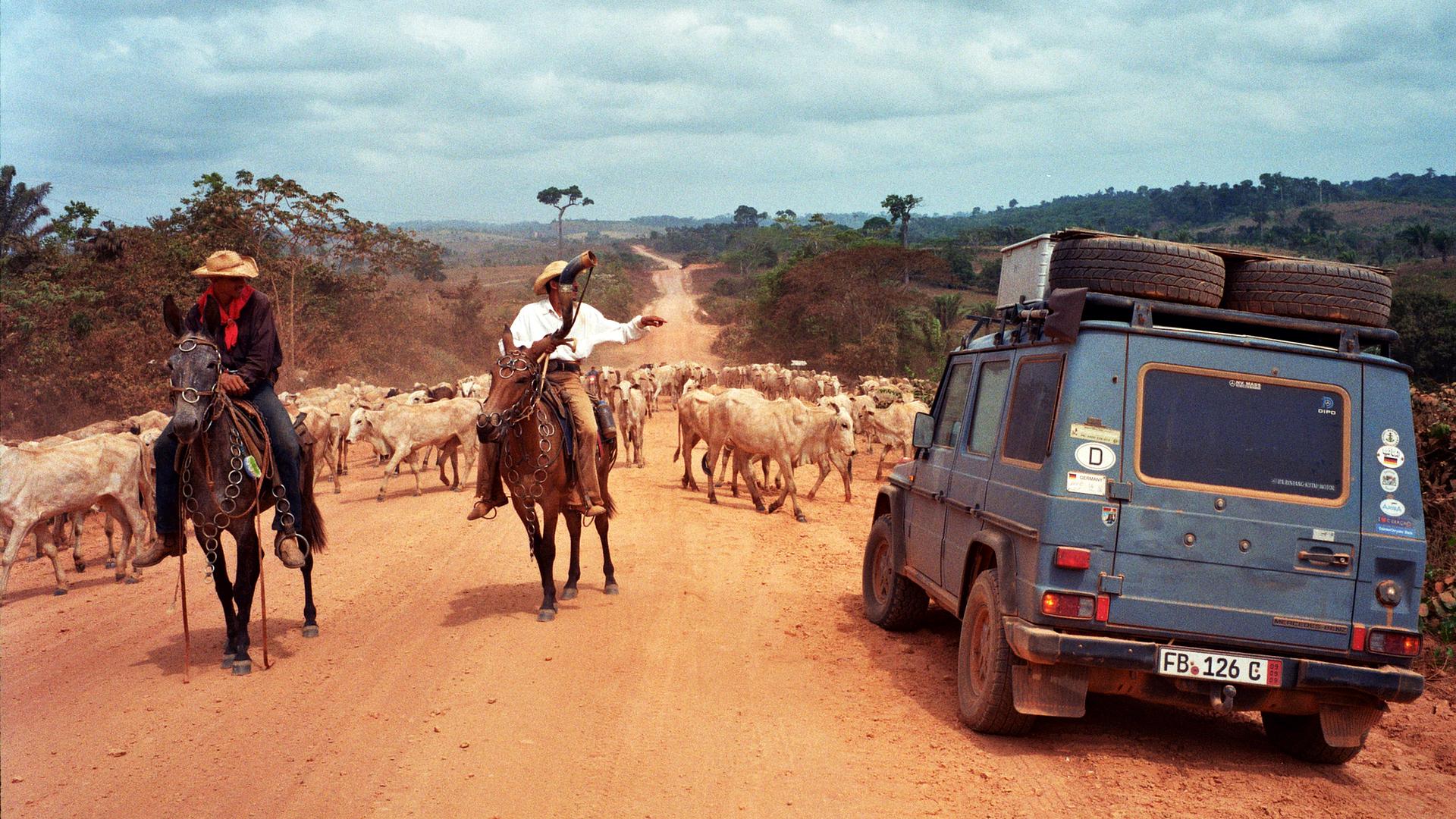
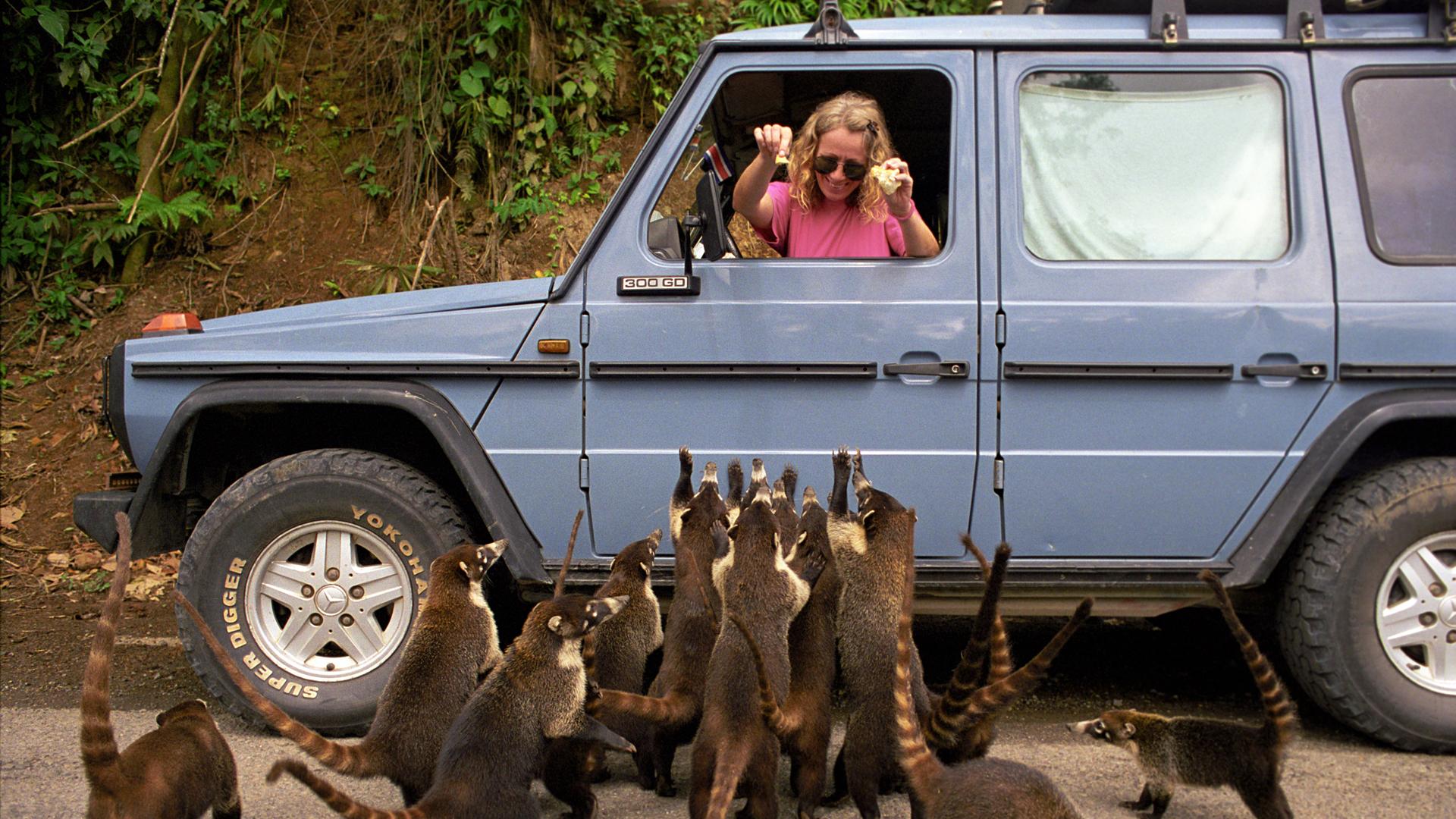



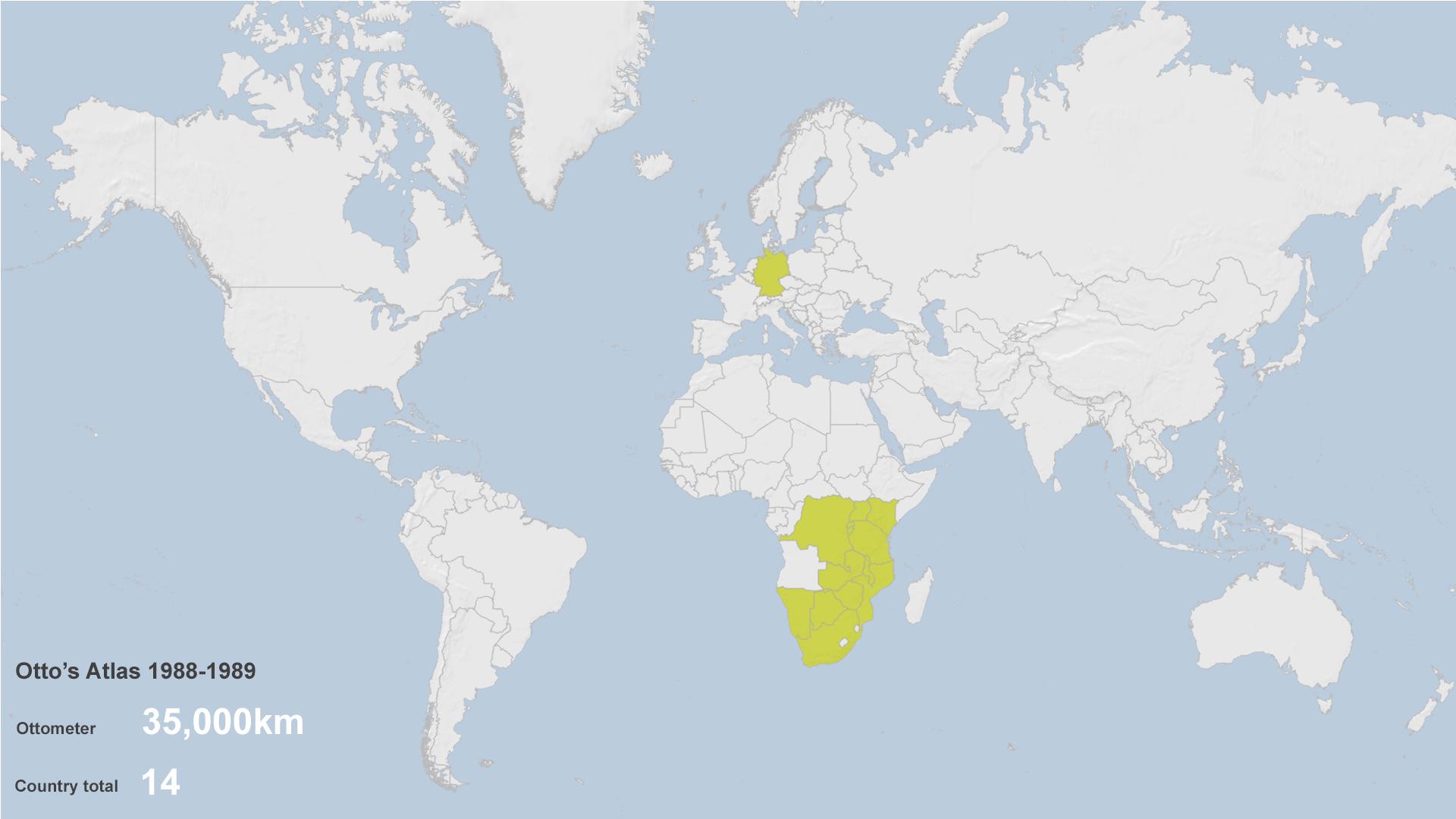
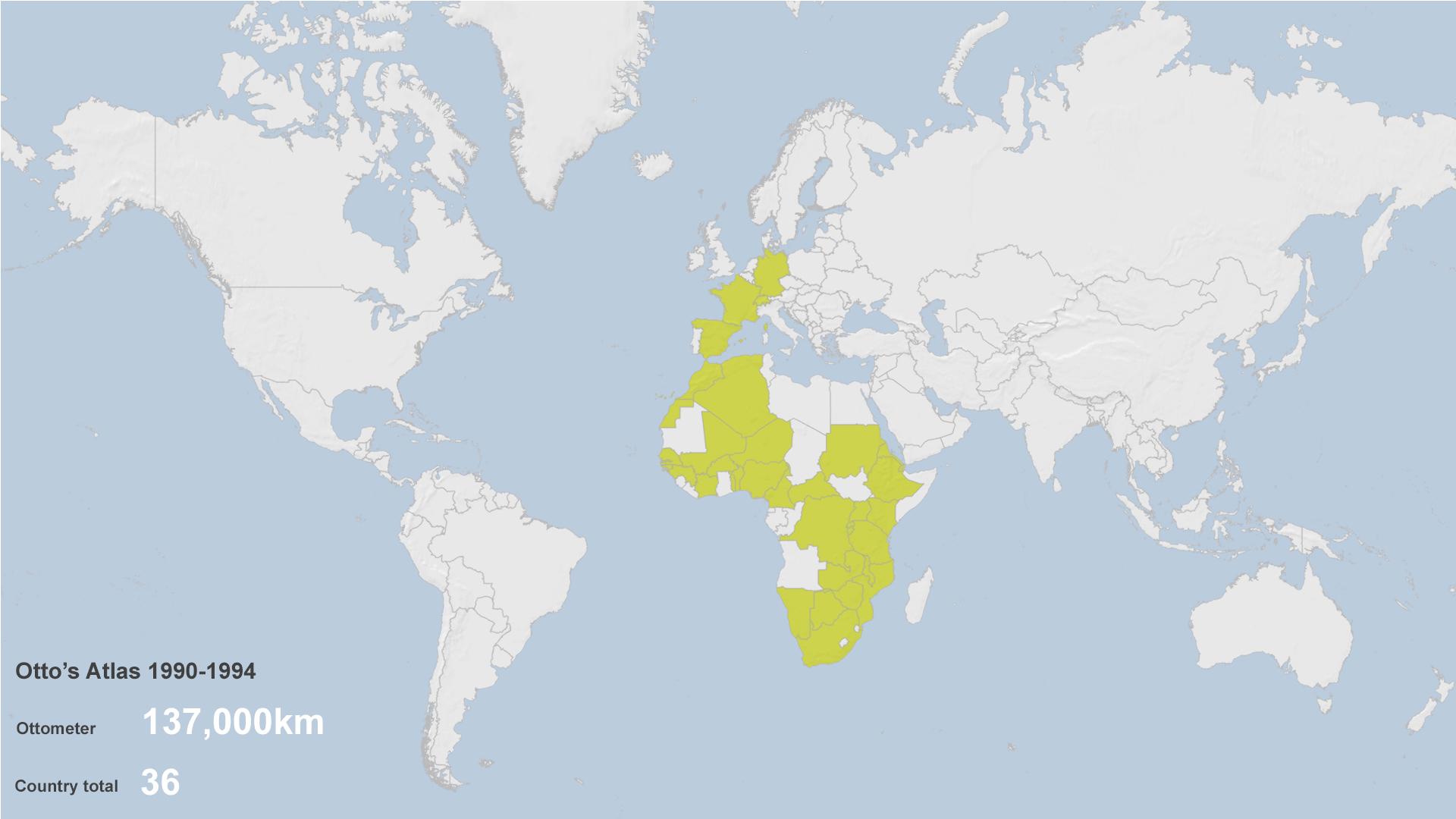
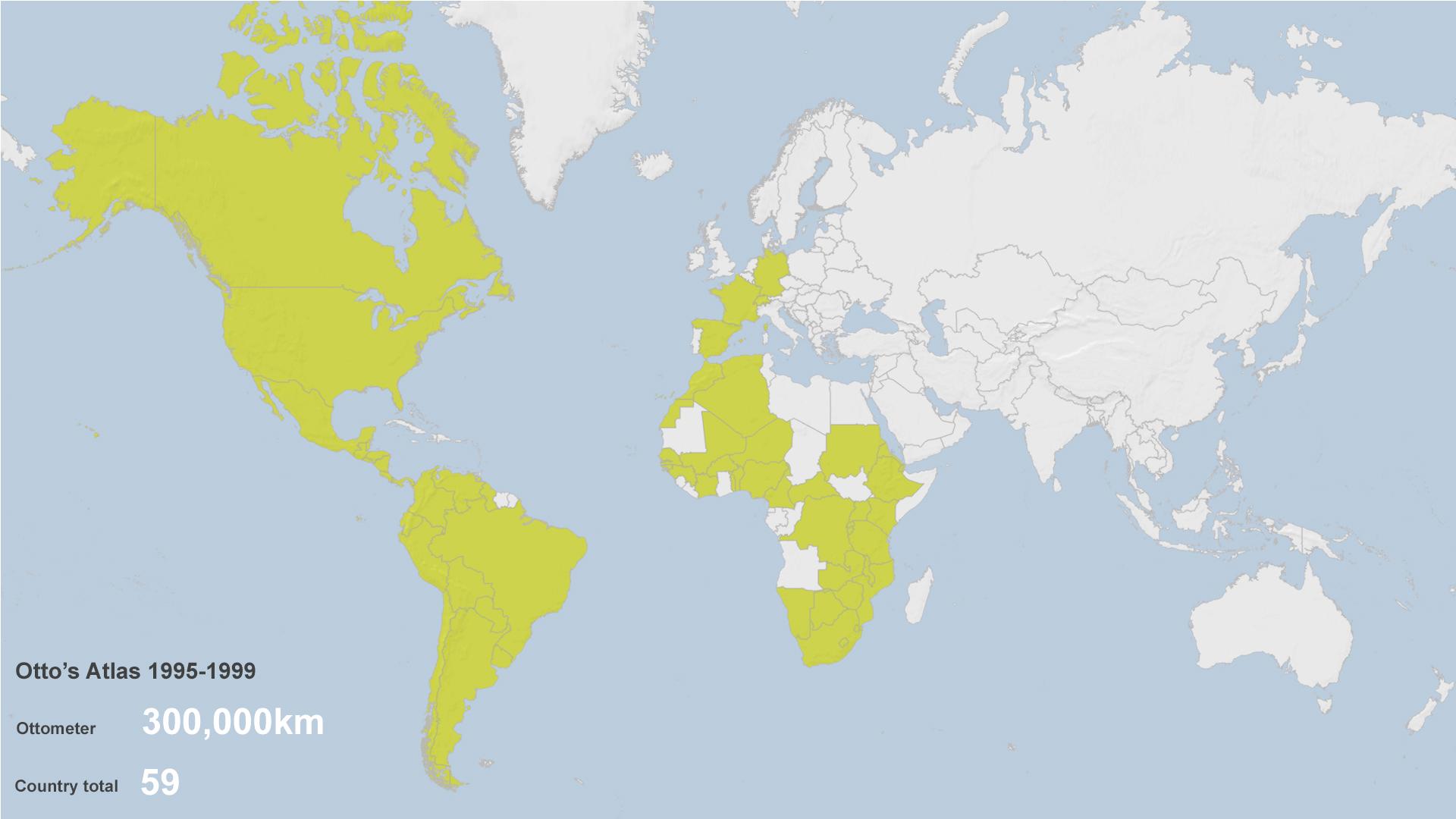
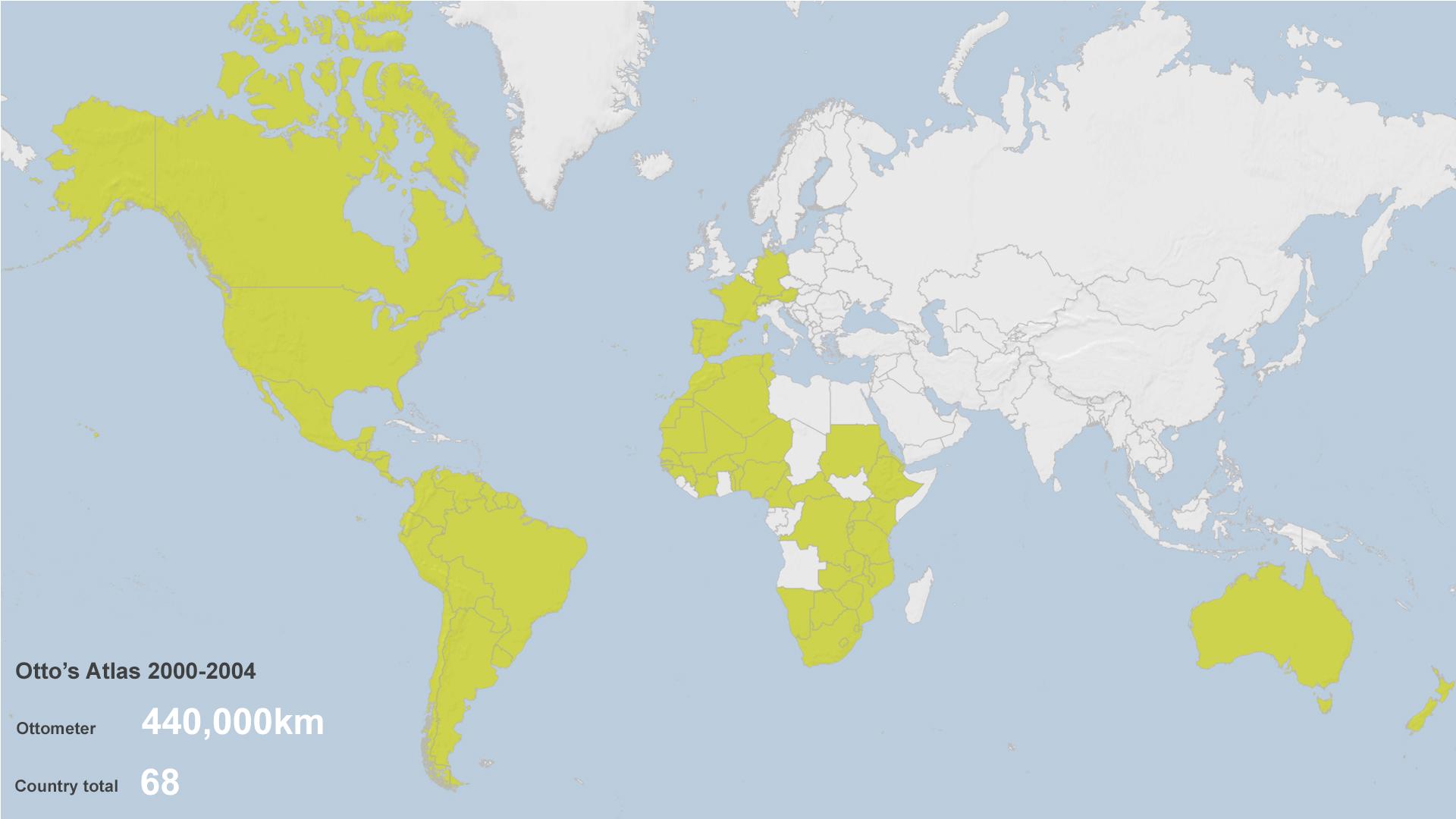
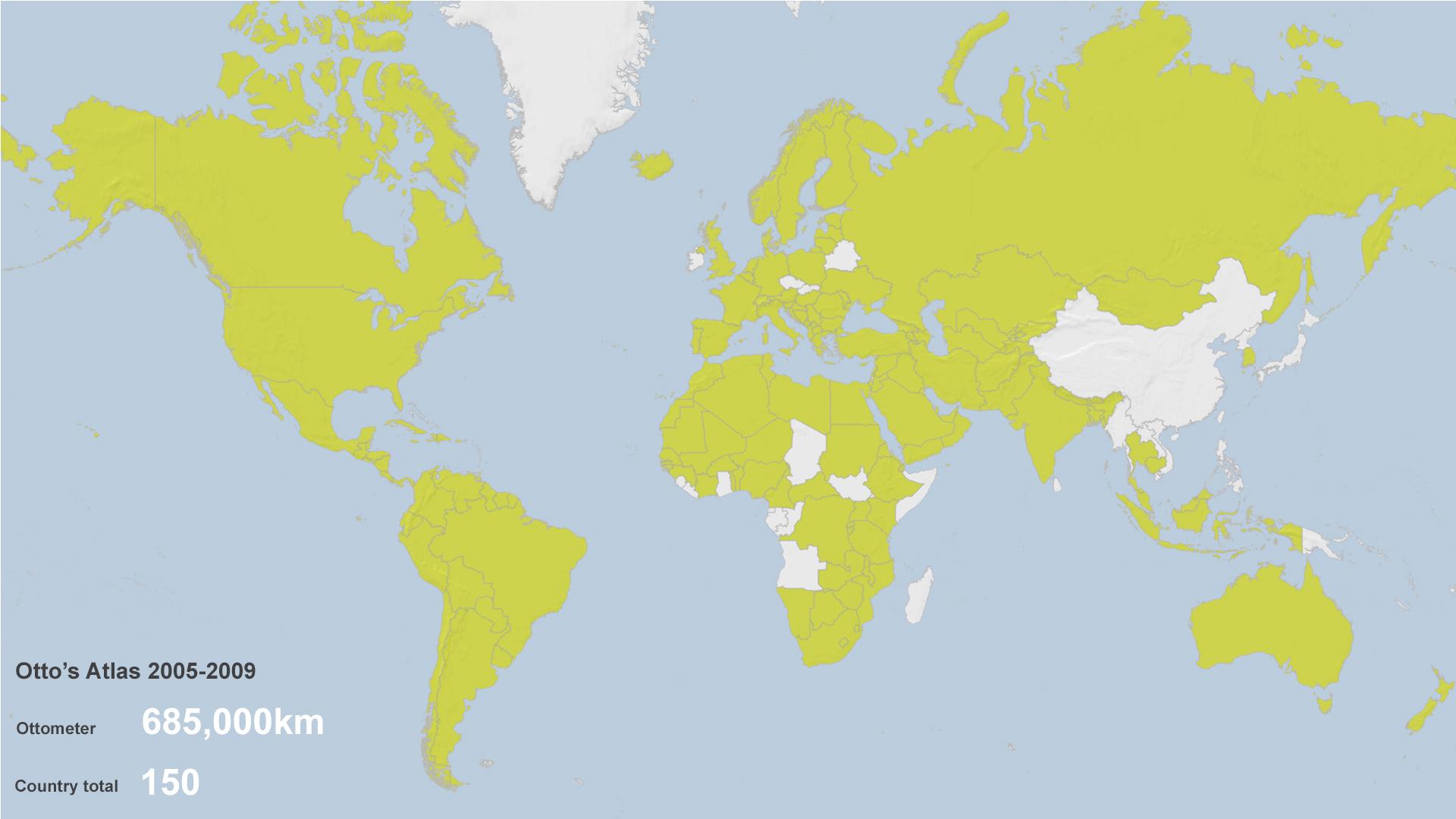
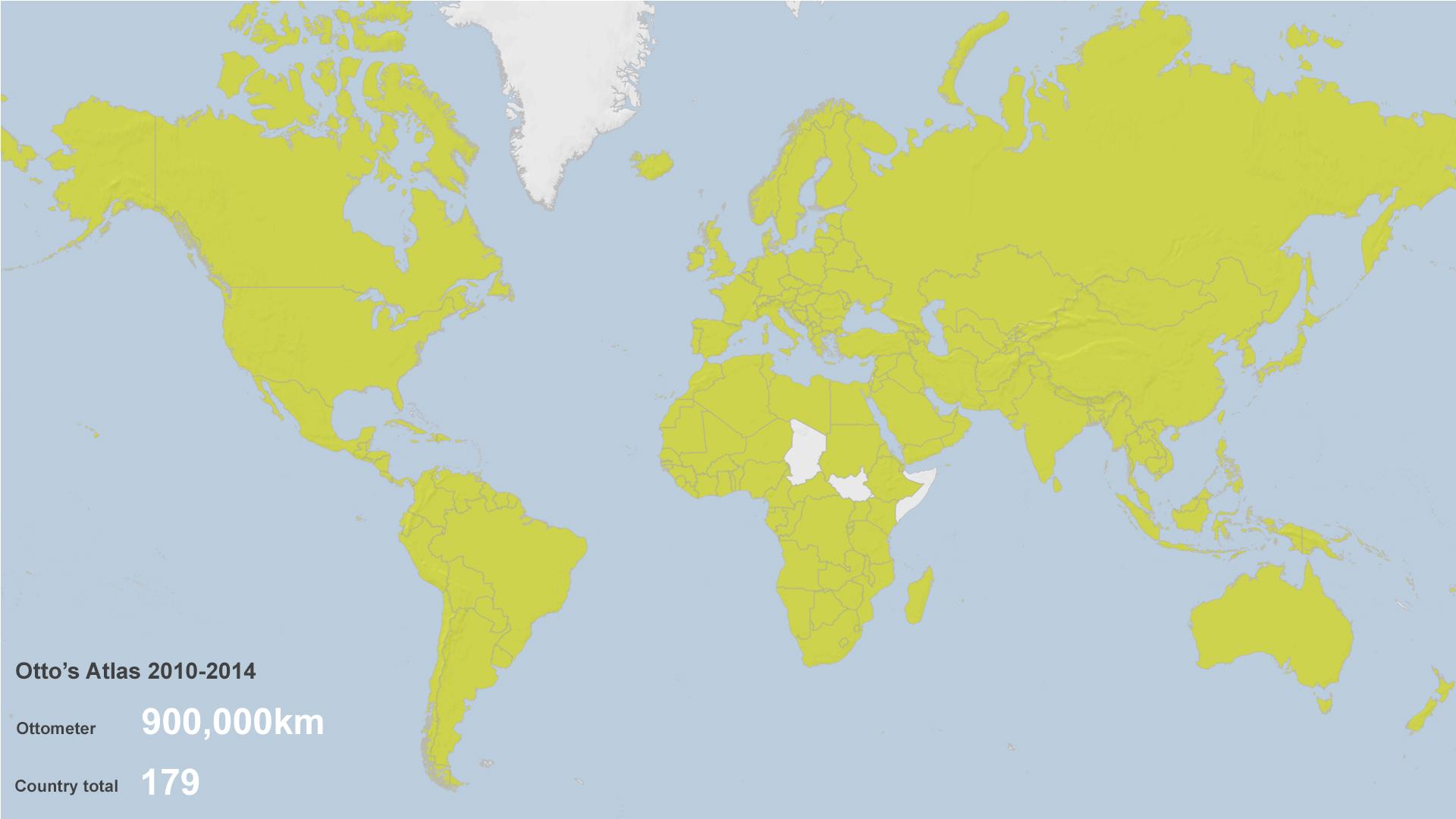
Asia
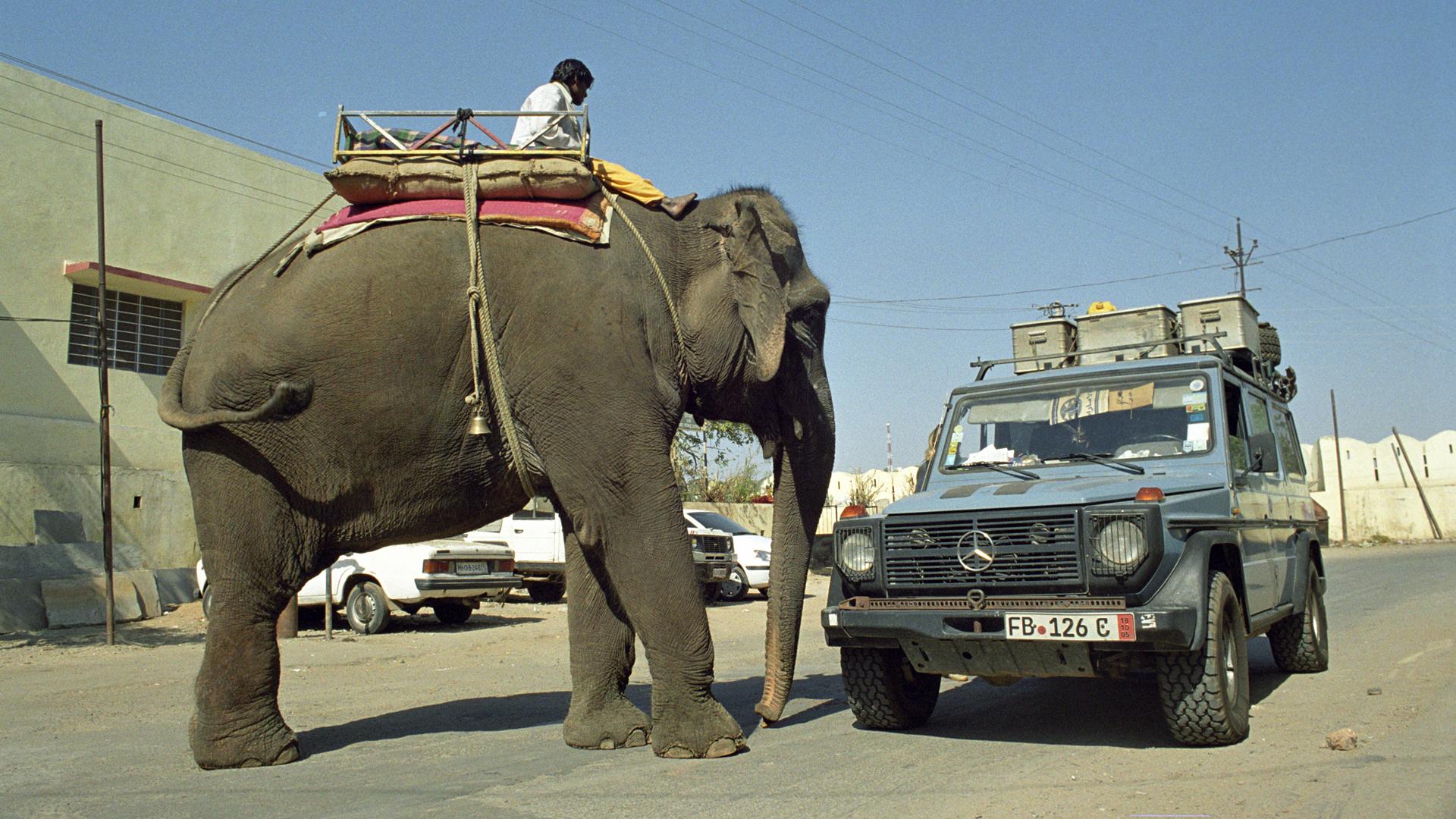
At this point in the Holtorfs’ journey, there is a growing sense of mission creep. The journey began with Africa, it extended to South America and the Americas. But after that they felt Australasia “was missing”, Holtorf says. And they were already making plans for Asia.
The expense was also mounting. Holtorf had done well in his 30 years in aviation - for the last three years of his working life he had been boss of the air transport division of the Hamburg-based shipping firm Hapag Lloyd. But after setting out on the road with Christine and Otto his main source of income was something completely different – a map of Jakarta.
Holtorf had begun mapping the city as a hobby shortly after taking over as Lufthansa’s Indonesia country manager in 1973. If he invited people to visit his house he had to sketch its location, or give their driver a detailed explanation – at that point the city was even without street signs.
A map was clearly much needed, and after three years’ work in 1977 he published one, the first of its kind.
Holtorf and Christine revisited Jakarta for months at a time throughout the 1990s, adding to the map as the city expanded, until eventually it became a 450-page atlas. In the mid-1970s four million people lived in the city and surrounding villages. Today Greater Jakarta has a population of 28 million.
This explains why their travels were intermittent. Otto spent the entire year of 2000 and much of 2001 in storage in New Jersey. But as time went on rival atlases emerged (bearing a marked resemblance, Holtorf alleges, to his original) and he reluctantly gave the business up.
After that the pace of Otto’s travels picked up.
In 2005, for the first time, the car was almost continuously on the move. They began the year in Libya, the 69th country on the tour. By September they had reached Kazakhstan, their 100th country, and the first in Asia. It was here, near the remains of the Aral Sea, that Otto’s odometer passed 500,000km (311,000 miles).
Afghanistan, which they entered via Tajikistan, was country number 103. “You could smell the tense situation in Kabul,” Holtorf says. They spent a night at the camp for the international security assistant force and moved on.
“Fortunately we were not held up. There are no bullet holes in the car and we survived Afghanistan. We stayed about 10 days and left via the Khyber Pass into Pakistan without any problem, but it was just a lucky situation.”
In Afghanistan you have difficult days and you have peaceful days, he says. “We are happy to have been there during a chain of peaceful days.”
At some point Holtorf says he developed the desire “to see most of this world”. But as he points out, the more you travel, the more you realise how little you have seen, just as when you learn a language the amount left to learn seems to grow rather than diminish.
So, as they had now been to all the inhabited continents, they started filling in the blank pages in Otto’s atlas.


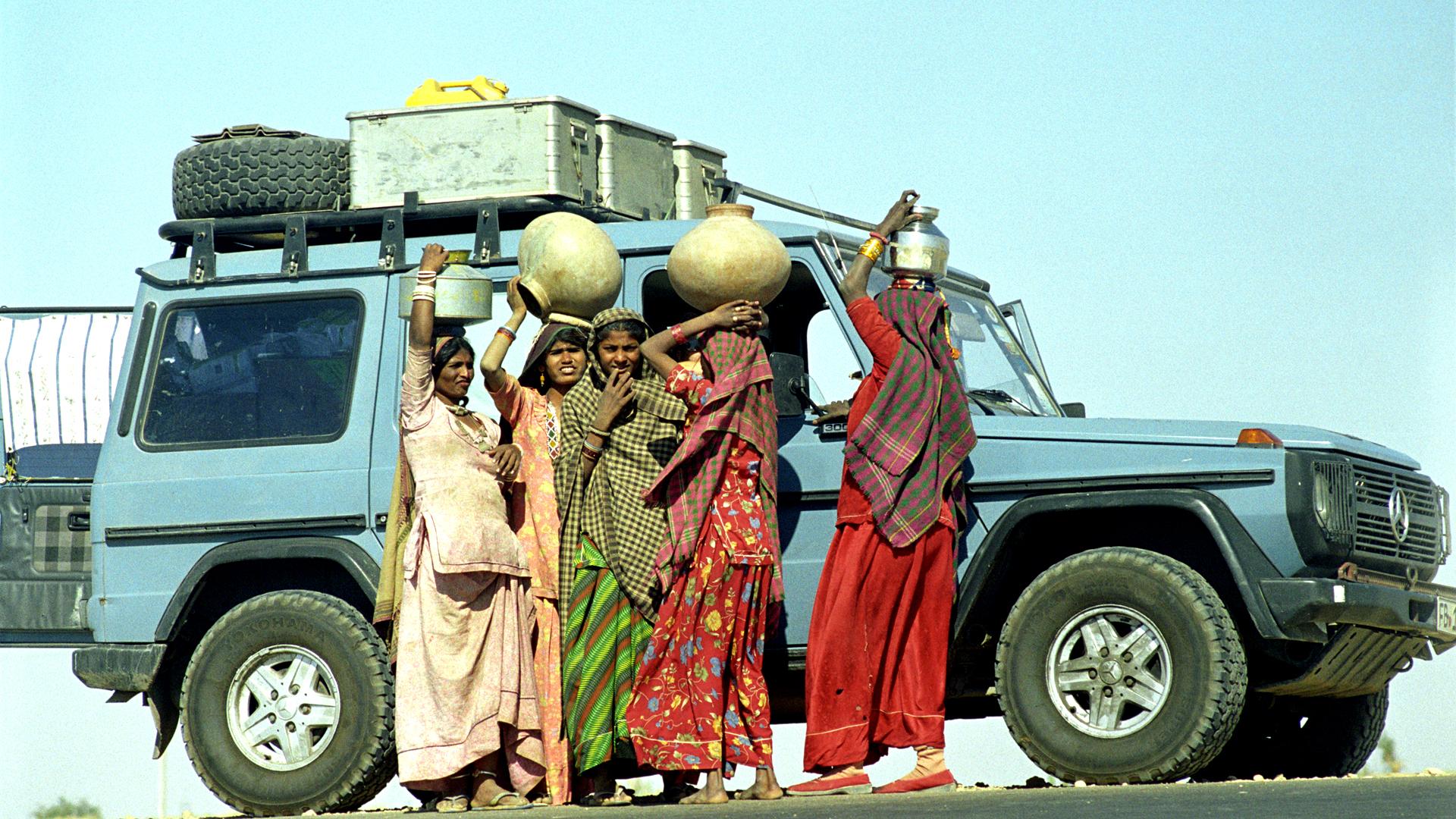


The Caribbean
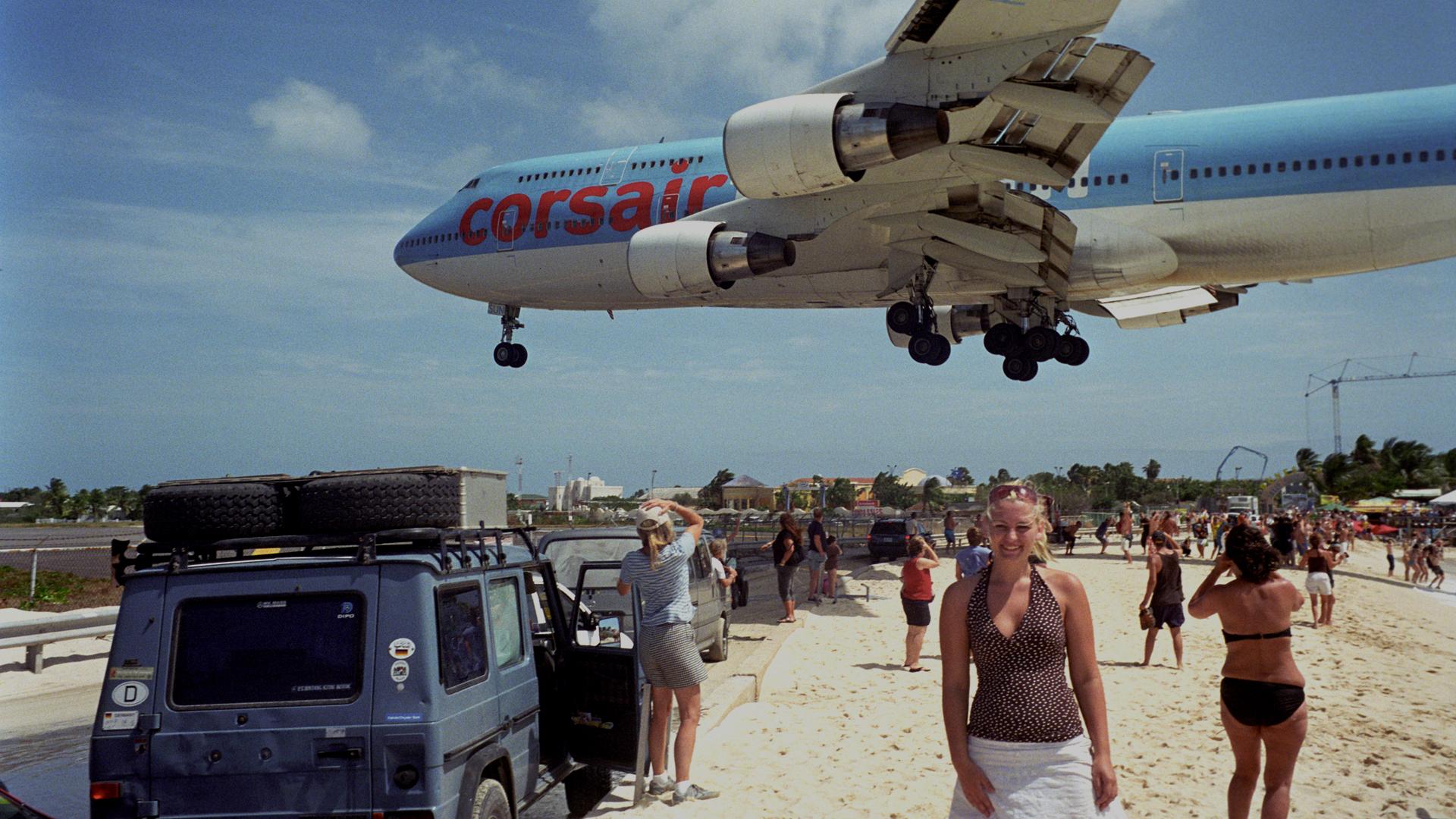
In 2003, Christine began to have problems with her face. The left side became partially paralysed and the hearing in her left ear deteriorated. Doctors diagnosed a benign tumour of the facial nerve, and she continued travelling.
Later it became clear that the tumour was in fact malignant. It was devastating news, but although she now needed to spend more time at home, she urged Holtorf not to stop.
In 2007, her son Martin, who had been 10 when the tour began, but was now 27, took her place for a trip from Jakarta to Europe, via northern Iraq (country 125) and Turkey. The following year, however, Christine was able to reclaim her seat for a madcap trip to the Caribbean. Not an obvious place for a motoring holiday.
Many of the countries Otto entered over the years had rarely seen foreign private vehicles. In some the request to enter by car was so unusual it was dealt with at the highest level.
The Holtorfs were able to enter Cuba thanks to the fact that one of Fidel Castro’s sons worked for the Mercedes distributor. “Raul Castro signed off the permission with his initials,” Holtorf says.
In the British Virgin Islands, they chanced to meet a young man who was the son of the prime minister of neighbouring Anguilla. He called his father, and everything was arranged. “It was just like a carpeted entry,” Holtorf says.
In St Lucia the matter was discussed in the country’s cabinet, before the green light was given.
Getting from one Caribbean island to another was also far from straightforward - for example, from St Kitts and Nevis to Montserrat, where Otto was loaded on to a “nutshell”, as Holtorf describes it, with front and rear bumpers extending beyond the hull to port and starboard.
“The boat was riding each and every wave,” he says. “It was scary. For 17 hours, Christine and I were sitting in the car, there was nowhere else to go.”
Holtorf had driven on to the boat using a ramp made of planks. But on arrival the boat was too high, or the dock too low, for this method to work. Every problem has a solution though, as Holtorf says. In this case it was a spider crane, which picked up a shipping container and positioned it so that the open door was just behind Otto. “Luckily there was no wind,” comments Holtorf. He waited until the pendulum motion of the container had ceased, then reversed in. The container was lowered to the ground, and Otto drove out.
Christine, watching from the shore, was so petrified she forgot to take a photograph.
A fortnight later they faced the problem of getting off the island. The only boat in the vicinity at the time was a rusty barge, which was contacted and asked to make an unscheduled detour.
The detour took the barge nearly a full day, and cost Holtorf 2,000 euros. But when it arrived there was a heavy swell. It had also lost one engine, making it hard to manoeuvre. Loading Otto required perfect timing.
The captain got the barge in position and lowered the ramp. Then Holtorf drove up the ramp before the barge moved. It was all over in two seconds.
Afterwards the captain said he would have tried it a second time, if the first attempt had been unsuccessful, but not a third. If the second attempt had not worked, Holtorf would have lost his money.
After the Caribbean, Christine mostly stayed at home in Bavaria. She wanted to be alone during courses of chemotherapy and radiotherapy. She didn’t even want Martin there, preferring him to visit once a week.
The last trip she made was to the UK (country 149) in May 2009. Miraculously, England and Wales were bathed in glorious sunshine, but Christine’s condition was deteriorating, and a planned trip to Ireland had to be called off.
She had known for a long time that the end was in sight, Holtorf says, and the couple were able to talk honestly about what would happen afterwards. She continued to insist that the tour most go on, and joked about monitoring his progress from a cloud up above.
“It was her wish. She asked me to please continue, not forgetting her and to do what I did on her behalf. I am sure that she will be happy to see it - and I do it, for sure, also since she asked for it,” Holtorf said in August 2013, as his journey seemed to be approaching its end.
The two had always intended to marry, but never found time. Finally they made it two weeks before she died, in June 2010. Holtorf had adopted Martin as his son many years earlier.
“We were quite satisfied, both of us, with the fact that we lived for so many years without any serious problem,” Holtorf says.
“We did all the travel successfully and peacefully because you must imagine that you live 24 hours like conjoined twins - there is no way that my wife could say, ‘Well I will stay in the kitchen for the next hour,’ or that I could say, ‘I will be in the garden out there reading a book.’ You know you are bound to stay together, and that’s 24 hours, seven days a week and 30 days a month.”

Two months after Christine’s funeral, Holtorf and Martin set off on a long journey, via Sri Lanka (country 155) to China and North Korea (156 and 157). It was a trip that had been long in the making, and one that Holtorf had been unable to organise without outside help. This help came partly from Mercedes.
The company had realised as far back as 2004 that Otto was a remarkable advertisement for the G-Wagen, and had paid for the car to be shipped from Australia to Germany for the model’s 25th birthday celebrations.
It had also persuaded insurance giant Axa to issue Holtorf with worldwide third-party insurance, a policy that may well have been unique.
But Holtorf was never sponsored by Mercedes. He bristled at the idea of any brash advertising plastered on his car. The whole point of travel, in his eyes, is perfect freedom - to go where you want, when you want - not to be steered one way or another.
To enter China, however, he needed assistance. Just to organise the paperwork would have taken him months of work. “You need a permit for each of the Chinese provinces and not only from the government of that province but from various ministries of the government of that province,” Holtorf says.
Wherever he went he carried two big folders of documents. It was also necessary to pay for an escort car, with a driver and escorting official. Mercedes absorbed the “ridiculous cost”, Holtorf says, in the knowledge that one day China will be its biggest market.
After nearly three months in China, and 30,000km - including a journey to Tibet and a frosty night at Everest base camp - North Korea beckoned.
To organise this visit, Holtorf had needed to call in the big guns of German diplomacy.
First the German ambassador to Pyongyang sent a “verbal note” to the North Korean foreign ministry asking for a temporary permit for Otto to visit the country. It was assumed in Berlin that there would be no response, and the long silence that followed was entirely expected.
But five months later the North Korean foreign ministry suddenly acknowledged receipt of the note. This was a good sign.
A couple of weeks after that, the ambassador was called to visit the North Korean foreign minister, and told the trip was on. It then took another five months to choreograph every detail of the itinerary, not one letter of which could subsequently be altered.
The plan was for Otto to cross by sea from the Chinese port of Dalian, to Nampo in North Korea. But a problem arose as soon as Otto cleared Chinese customs (a process that had taken three days). Holtorf was told that it was “prohibited” for passengers to board the container ship – Otto could travel to North Korea, but he and Martin couldn’t.
Bizarrely, it was Pyongyang that then leapt into action to organise a solution. The North Korean ambassador to Beijing requested special permission for the German visitors to board the ship.
As a result the captain was told not to leave port, permission was eventually granted, and the ship departed two-and-a-half days late - with a band and all the port dignitaries on the dock to wave farewell. “A real bang-bang,” as Holtorf describes it.
The late arrival was causing panic in Nampo, however. The ship finally docked at 01:00, in total darkness – there was no electricity - but a car containing two German-speaking escorts was there, waiting. Holtorf was instructed to take Otto out of the container immediately, in the dark, to re-attach the roof rack and its load, and to prepare for an 08:00 start. He and Martin finally left the port after 03:00 and snatched no more than a couple of hours’ sleep in a run-down hotel.
From that point on the pre-arranged plan was executed with military precision. Otto and the escort car passed roadblocks every few kilometres.
For extra security it had been arranged that there was no other traffic on the road. In Pyongyang, meanwhile, every police officer had been issued with a picture of Otto.
Holtorf remembers North Korea as the most expensive country he has ever visited.
“We were official government guests, we were guests of the late great leader Kim Jong-il but we were paying guests,” he says. “They demanded a lump sum to enter the country, which we had to pay.”
For a fortnight, it came to 5,500 euros (£4,300).
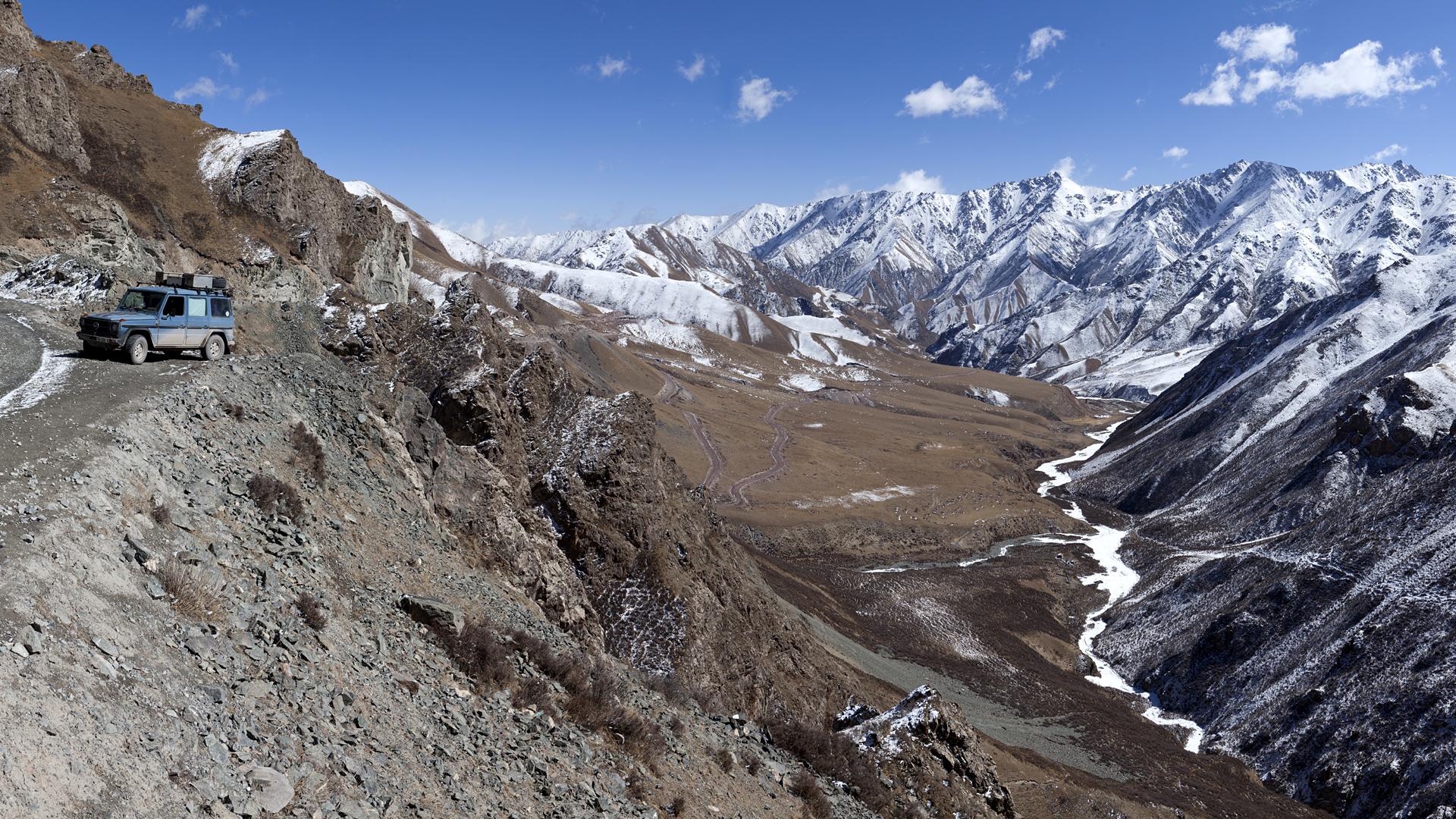
Hard nuts
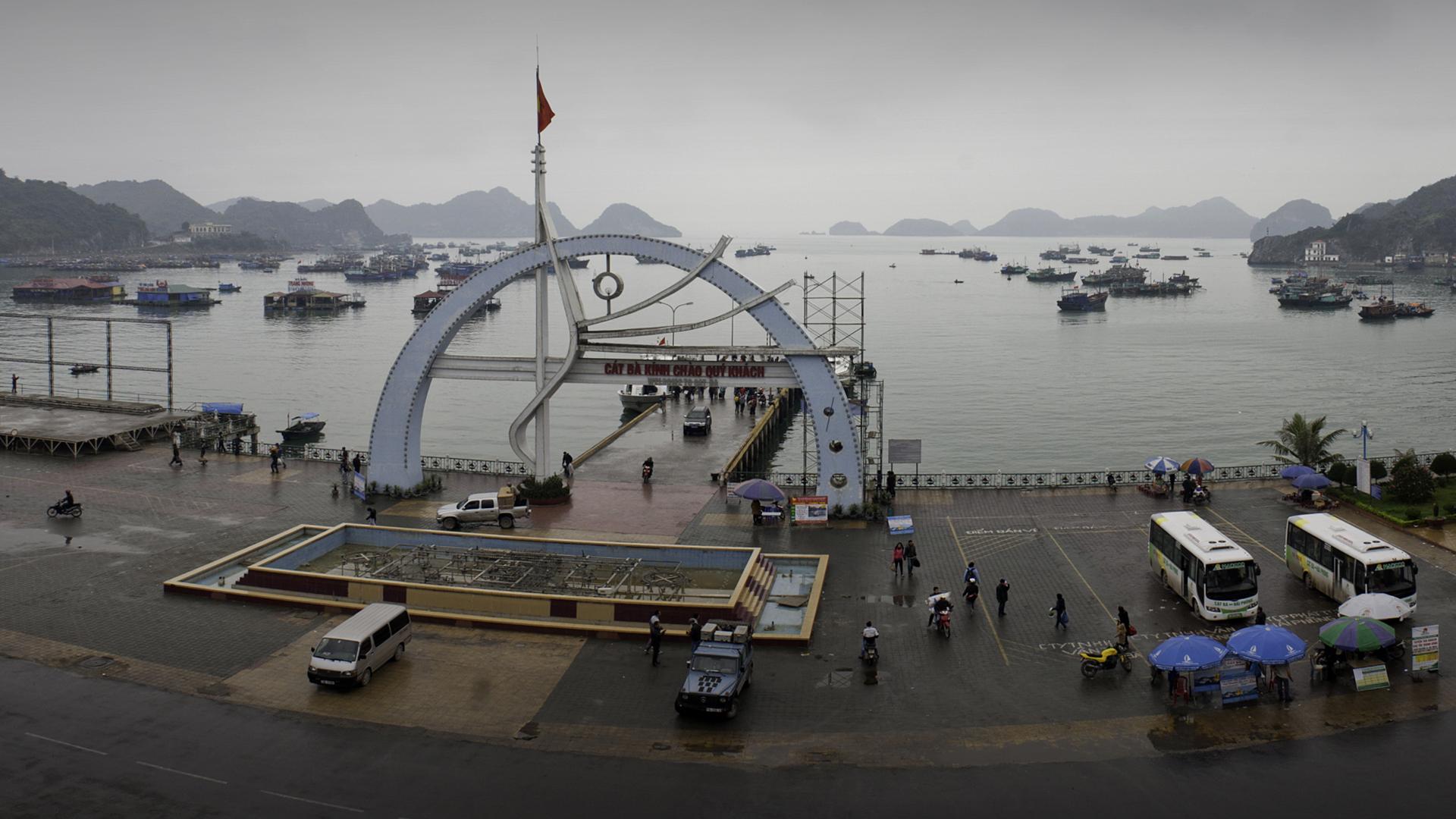
Patience was always Holtorf’s main weapon when dealing with officials.
He didn’t bribe or bluster. Instead he smiled and waited, and produced a printed copy of his world map, showing the innumerable countries he and Otto had visited over the years, with the roads they had taken drawn in red. In later years red lines zigzagged and looped across the paper from Tierra del Fuego to Vladivostok.
He also made sure his papers were always in order, including a carnet de passage for Otto through the country in question.
Although his insurance policy covered the whole world, each year he asked the insurer to print on the document all the countries Otto would be entering over the following 12 months, so that there could be no misunderstanding.
It was the same at checkpoints, where soldiers, police, or just armed men representing the village chief asked without fail for a “present”, a drink, or cash.
Driving from eastern Mauritania towards the capital, Nouakchott, Christine counted 59 roadblocks, and then gave up. Holtorf’s strategy, again, was to joke with them, or break into laughter. And he always had plenty of copies of the map to give away.
Every now and again, though, a border presented problems. Crossing from Sudan into Ethiopia, on one occasion, the officials didn’t want to accept the carnet, and the man in charge had gone awol.
It took three days to sort out, with Holtorf and Christine eventually agreeing to give a man a lift in return for permission to enter the country. This strategy was occasionally repeated. Once three soldiers were squeezed into the passenger seat, each carrying a Kalashnikov. On other occasions passengers stood on the rear bumper - but Holtorf always refused to have people sitting on the roof.
After North Korea, Holtorf finally managed to crack three other countries that put huge obstacles in the path of travellers arriving by car.
The first was Vietnam. In 2010, Holtorf had spent four days on the border, trying to enter from Laos, before giving up. A year later he tried it from Cambodia, but once again the best efforts of Mercedes in Ho Chi Minh city were to no avail.
Finally he paid an agent $2,000 to arrange it, of which he suspects only a fraction went to the government; the majority, he assumes, ended up in officials’ pockets.
Vietnam became country 164 on Otto’s list in February 2012.
Then came the Philippines. Holtorf had been trying to get into the country for six years, but the authorities were demanding a $30,000 bond guaranteeing that the car, having entered the country, would be taken out again. Eventually Mercedes persuaded them that this was an unnecessary precaution. Country 165.
Then Japan. For seven years Holtorf had been running up against the same problem - Japan's refusal to recognise German car registration. That’s because in 1926, when the first multi-national agreement on car registration was drawn up, Japan refused to sign it. It did sign the follow-up agreement in 1949 – but this time Germany didn’t, on the grounds that it had signed and ratified the first.
Once again, German diplomats swung into action on Otto’s behalf, but this time they hit a brick wall even harder than North Korea’s. It seemed that nothing could be done.
But then Holtorf got wind that customs officials at Shimonoseki, a port served by a lorry ferry from South Korea, might turn a blind eye and accept Otto’s carnet de passage. He took the risk.
Holtorf says: “Technically Otto was illegally in Japan. It was a gamble and there was a danger that the car would be confiscated.”
Everything went smoothly, however, and Japan became country 166.
Since the start of 2012, Holtorf had been travelling alone, but in Japan he was joined by a new companion. Elke Dreweck had been married to the son of an old friend, and on a brief trip back to Germany, as Otto was being shipped from one port to another, Holtorf had found a black-framed card from Dreweck informing him of her husband’s death.
He called to offer his condolences, as one recently bereaved person to another. Then, at the end of their conversation, he asked her if she would like to join him on his next trip. It was clearly not a question she had been expecting. There was a pause, Holtorf says. Then she said she would consider it.
Holtorf was already back on the road by the time a message from Dreweck came through. It was a Yes.
“When she arrived I didn’t recognise her. I’d met her only a couple of times,” Holtorf says. Dreweck was 45, Holtorf was some 30 years older, but their travelling partnership was a roaring success.
Dreweck ended up taking a year off work and journeying with Holtorf across Russia and down the west coast of Africa, culminating in a difficult route on sand from Angola (country 174) into Zambia, with only a map, a compass and a primitive GPS for a guide.
“Life is a chain of missed opportunities,” Holtorf says, “and you have to make sure the chain stays short.” He could easily have let slip the opportunity to invite Dreweck to join him, and she could easily have turned down his bold suggestion. But the opportunity was taken, not missed.
After Dreweck's return to Germany in mid-2013, Holtorf continued picking off missing countries, including Myanmar (176) – a “sleeping giant” he says - and of course Madagascar (177), where, on 5 May 2014, Otto slipped and rolled off the road.
Resting place
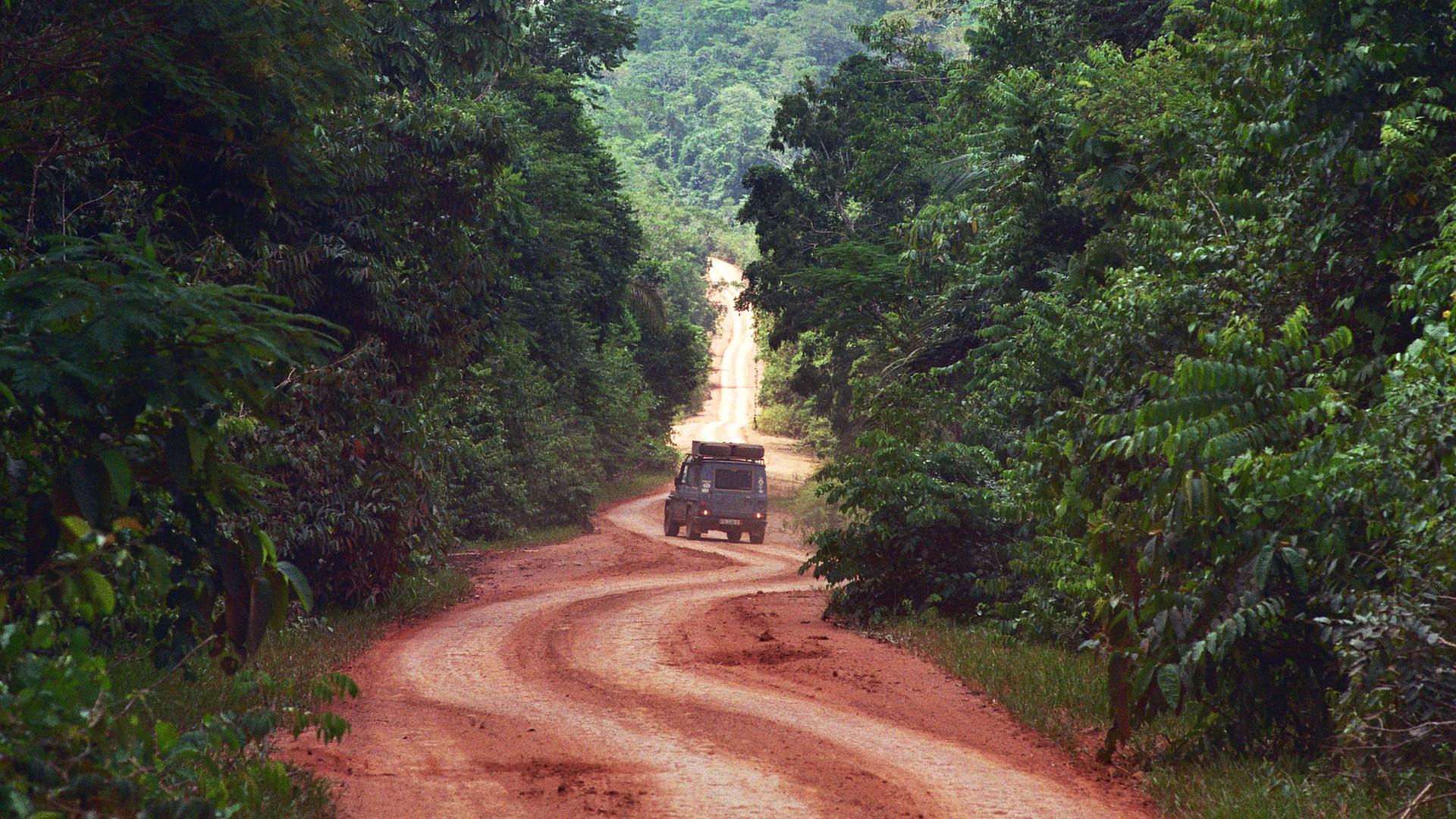
After pulling himself out of the upturned car, Holtorf sat down by the side of the road and waited. About half an hour later, as the sun was beginning to sink, a car pulled up.
To Holtorf's amazement, out stepped a French priest.
The priest called a policeman and gathered a group of men to guard Otto overnight. In the morning the tree that halted Otto's fall was chopped down, Otto was allowed to roll on to his wheels, and was then hauled back on to the road.
After checking for leaks, Holtorf put the key in the ignition, and turned.
Otto started first time.
But although the car could still be driven, and all the doors still opened and closed, the body had been left slightly tilted to one side.
Despite being so close to the end of his travels, Holtorf decided to have it replaced. He shipped the car back to Europe, where once again Otto’s straightforward nuts-and-bolts construction turned out to be a blessing - the body of a G-Wagen is attached to the chassis by only six bolts.
Holtorf found an old, rust-free body two years older than Otto’s, got it resprayed in Otto’s shade of China Blue, and then had it bolted on. The chassis and the engine, the interior of the car, the bonnet and the front section of the body (everything in front of the windscreen) remain just as they were before the accident.
This new, rejuvenated Otto, is the one that visited the last two countries of the 26-year tour – Ireland (178) and Belarus (179).
Scanning the list of 193 UN member states, plus Taiwan and the Vatican – which together make up the 195 countries recognised by Guinness World Records – one finds only 16 countries missing from Otto’s itinerary.
Three of them – Chad, Somalia and South Sudan - were not safe enough to visit when Otto was in the vicinity. (South Sudan, of course, only came into existence in 2011.)
Holtorf says logistical reasons, principally time and cost, prevented him reaching three others - the Bahamas, Cape Verde and Sao Tome and Principe - while the Caribbean state of Antigua and Barbuda, refused entry.
The remaining nine countries, from the Comoros Islands to Tuvalu, are tiny atolls with barely any roads, so there would have been little point visiting in a car.
Otto has also visited dozens of territories that are “special” in one way or another - semi-autonomous regions or breakaway states - from Abkhazia and Aruba to Kosovo, Wales and Western Sahara.
The world record for the longest driven journey is held by a Swiss couple who set out in a Toyota Land Cruiser in 1984, four years before Otto was built. But it’s likely that Holtorf and Otto will be awarded the Guinness record for the most countries visited in a single vehicle.
Otto, to put it another way, is the world’s “most-travelled” car.
Asked which was the friendliest country they visited, Holtorf hesitates, and says “Ghana”, then adds, "and Australia". If it weren’t for the need to sterilise one’s car on entry (at considerable cost in time and money) Australia would be “perfect” he says.
But he also maintains that outside towns and cities, people are friendly in pretty much every country, all over the world.
The worst roads he experienced were in Zaire, now the Democratic Republic of Congo, where the potholes were "big enough to swallow Otto whole", he says.
And the worst toilets? “We have found various degrees of toilet quality on earth,” Holtorf begins. “The worst one was and still is Russia. And the reason is quite straightforward. One of Russia’s social problems is vodka. The male population is just consuming too much vodka and after an extensive consumption of vodka, the toilet control might be a little bit out of control and for that reason toilets particularly public toilets in Russia are in very bad shape.”
He then adds: “Number two is China.”
Holtorf advises people not to moan about countries they visit. They cannot change them, so if they don’t like them, they should stay away.
This week, Holtorf and Otto returned triumphantly to Berlin, and for a while it seems they will be exposed to the glare of publicity, on a lecture tour of the biggest Mercedes sales offices in Germany, and a handful overseas, including London, New York and Moscow.
Publicity is something that Holtorf never courted before, partly for security reasons - he felt safer with the lowest possible profile. But also, he says, he and Christine travelled for their own enjoyment, not to shout about it to other people.
Travellers who post daily updates on the web utterly perplex him - he doesn’t understand such misguided behaviour. Only a few subjects get him at all worked up – overpopulation, for example, or the West's wasteful disposable culture – but this is one of them. He has no plans to write a travelogue.
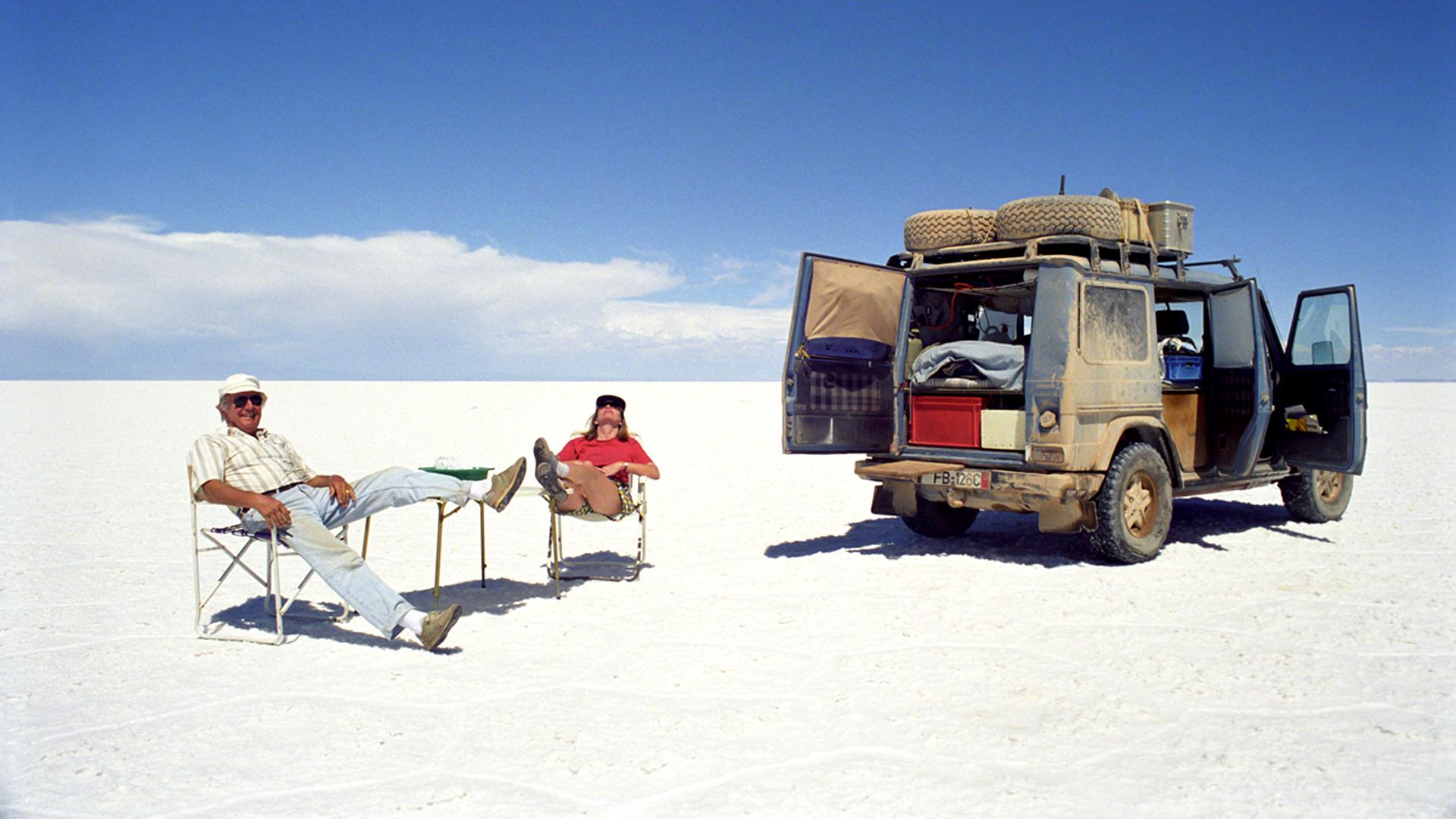
Otto will in due course take pride of place at the Mercedes museum in Stuttgart, with a fee exchanging hands that is likely to reflect the sum Holtorf estimates he has spent on the car over the years – 450,000 euros. That includes:
· More than 100,000 litres of fuel bought at widely varying prices - fully loaded, Otto consumes about 12 litres per 100km (that comes to about 20 miles per gallon)
· Shipping Otto in a container on 41 occasions, each costing an average of 3,500 euros, including payments to shipping agents, ports, and short-notice economy air fares for Holtorf and Christine
· Spare parts costing a total of 85,000 euros (adjusted for inflation) - twice the original price of the car
· About 100 ocean-going ferries (Denmark to Iceland, for example) and 200 river ferries
It’s a big sum, but Holtorf points out it boils down to less than 1,500 euros a month, and only one euro for every 2km.
At the end of his journey now, Holtorf marvels at how it ended up taking so long, and knows it amazes some other people too. He has a daughter from his first marriage who mocks him for trying to count “each individual straw in all the fields in all the world”.
He, on the other hand, feels that he has only “scratched the surface”.
He also never ceases to be amazed by the way his car performed. “When people praise me, I say it’s Otto,” he says. “The sturdiness and reliability of this car is absolutely astonishing.”
But parting with Otto won’t be too hard. He has another Mercedes at home – a right-hand-drive E class, which he bought in Indonesia in 1978 and took on long journeys in South America in the 1980s.
Being 10 years older than Otto, it is also, of course, pre-electronic. “It’s a very reliable, very basic car. I like it very much,” Holtorf says. "I like old stuff - no fancy stuff." It has done a mere 500,000km, so far. That’s just a snip.
